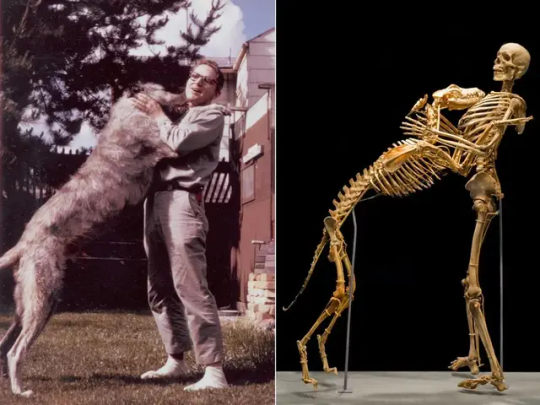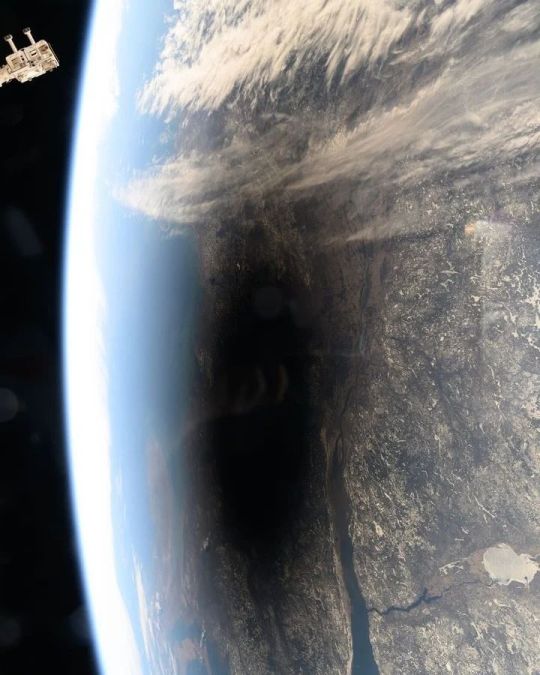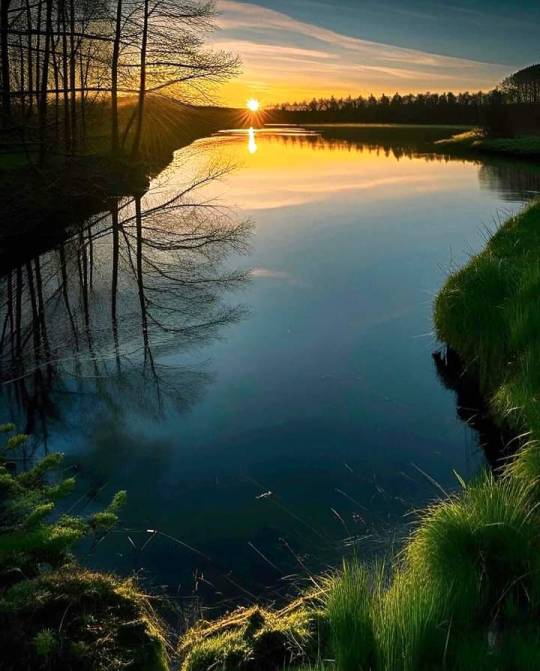#Science
Text

#lgbtq+#gay#lesbian#bisexual#trans#queer#trans men#trans women#non binary#pansexual#asexual#pride#pride month#transgender#transfem#nonbinary#trans joy#trans community#trans beauty#information#learning#fyi#history#nature#science#the more you know
1K notes
·
View notes
Text

In 2002, anthropologist Grover Krantz made a unique arrangement for his final resting place: donating his body to the Smithsonian, with a heartfelt condition. Krantz insisted that his cherished Irish Wolfhound, Clyde, accompany him in death. True to his wishes, when Krantz's body was put on display in 2009, Clyde stood faithfully by his side for all to see.
1K notes
·
View notes
Text

NGC 3372, Eta Carinae
772 notes
·
View notes
Text
Insects are critical to the survival of most other animals, including humans. But many insect species, from beetles to dragonflies to butterflies, are declining in abundance due in part to human activity. For Earth Month, Insectarium host Dr. Jessica L Ware gives tips on small things each of us can do to make a lasting impact and help insects thrive for years to come.
Learn more about insects with Museum Curator Jessica Ware in Insectarium on PBS Terra's YouTube channel.
#science#amnh#museum#natural history#nature#animals#insects#bugs#entomology#conservation#biodiversity#earth day#earth month
472 notes
·
View notes
Text

It's salamander season again.
#spotted salamander#salamander#salamander eggs#eggs#egg mass#pond#poo#vernal#vernal pond#vernal pool#Ambystoma maculatum#nature#naturalist#sketch#watercolor#pencil#sketchbook#wildlife#animal#amphibian#Ambystomatidae#science#biology#pond life
254 notes
·
View notes
Text

Space view of moon's shadow on earth during eclipse
#astronomy#astro community#astrophotography#science#cosmos#photography#space#solar system#2024 solar eclipse#solar eclipse
253 notes
·
View notes
Text
Okay. This is a pretty big deal in the world of mycology. Historically fungi have been divided up into either parasites that siphon resources from plants, mutualists that cooperate with them, or saprotrophs that break down decaying organic matter (plant and otherwise.) The genus in question, Mycena, has traditionally been made of saprotrophic species feeding on decaying wood.
However, what scientists are observing is Mycena fungi displaying primitive mutualistic behaviors, specifically providing living plants with nitrogen and getting carbon in return from a living partner, or getting to chow down on the plant's remains once deceased. This shows a significant level of adaptability that hasn't been observed in fungi beforehand, though given how much we don't know about fungi there's a good possibility this isn't an unprecedented event.
It doesn't surprise me one bit that we're seeing this in Mycena. These fungi are especially opportunistic; in fact, that mushroom growing out of a frog's skin that we saw a while back was also a Mycena species. Perhaps we need to add bonnet mushrooms to raccoons, dandelions, and other hardy generalists as symbols of scrappy survival in spite of environmental pressures.
#Mycena#bonnet mushrooms#mushrooms#mushroom#fungi#fungus#mycelium#mycology#botany#biology#nature#science#scicomm#evolution#environment#ecology#mutualism#mycorrhizal fungi
200 notes
·
View notes
Text

#art#nature#photography#photographers on tumblr#tumbrl#sunrise#sunset#sky#sunshine#sun#light#night#sun and moon show#flora and fauna#flowers#trees and forests#awesome#pastel#paradise#original art#online#explore#trending#travel#digital art#drawing#sea#sunlight#science#evening
202 notes
·
View notes
Text

Locals gather around lava from a volcano eruption near the city of Reykjavik, Iceland (2021) Photo: Brian Emfinger
#nature#science#earth#planet#aesthetic#lava#firecore#iceland#reykjavik#brian emfinger#photography#naturecore#sciencecore#earthcore
198 notes
·
View notes
Text

A longer video featuring @echomary answering my questions about how UV stuff works! And you can watch me color with an absurdly fun colored pencil.
#art process#neon#eye strain#art#traditional art#animal art#coyote#colored pencil#UV#uv art#uv reactive#photons#science#light science#glow in the dark#art video
176 notes
·
View notes
Text

On a scale of "Lables on the algal cultures in my labs collection", how are y'all doing today?
178 notes
·
View notes
Text

Clearest photo of Pluto ever taken
#pluto#planet pluto#solar system#astronomy#astronomers#nasa#universe#astrophotography#nasa photos#astrophysics#outer space#nasawebb#hubble space telescope#i love astronomy#astronomy facts#astrography#astro community#astro notes#astro observations#astroblr#space exploration#space#science#science facts#planetary science#cosmos#the universe#galaxy#galaxies#planetary nebula
107 notes
·
View notes
Text

NGC 6164, Dragon's Egg
449 notes
·
View notes
Text
Strange little star-fruit of a jagged ambush bug
👀


130 notes
·
View notes
Text
By studying calcifying organisms, Leanne aims to better understand the impacts of human activity on marine ecosystems. Through her research, she hopes to influence policy that helps protect marine calcifiers in the future.
“Why is this important? The idea is that the more porous the shell, the weaker it is. Mussels need strong, robust shells to protect their inner soft organs—and that strong 3D structure is important for ecosystem function as habitat formers and storm defenses.
Currently, the changes seen in shell porosity are not large enough to influence the material properties, so we aren’t seeing weaker shells just yet. But with further warming in our oceans being predicted, this could potentially lead to even more porous shells, potentially impacting mussels’ function as habitat formers and storm defenses, as well as their ability to protect themselves from predation,” Melbourne explains.
Learn more about her research here.
#science#museum#amnh#natural history#nature#marine biology#marine ecosystem#mussels#bivalve#did you know#fact of the day#research#women in stem#climate change#conservation#earth month#earth day
186 notes
·
View notes
Text
so idk if any of ya'll knew but apparently Voyager 1 has been out of contact with nasa for the past five months and contact has only just been reestablished! it takes 22.5 hours to send messages to Voyager 1 and another 22.5 to receive messages back. this little machine has been telling us about instellar space (space between systems) for years now and a chip responsible for sending the data packages stopped working so nasa scientists figured a work around that actually managed to work and now, now little Voyager 1 is going to be able to talk to us again.
like i'm so genuinely happy about this and like we really are the generation that fell in love with little robot explorers aren't we
#Space#News#Voyager 1#Science#I'm so happy we can talk to Voyager 1 again lmao#Like this makes me happy and I need happy rn
129 notes
·
View notes